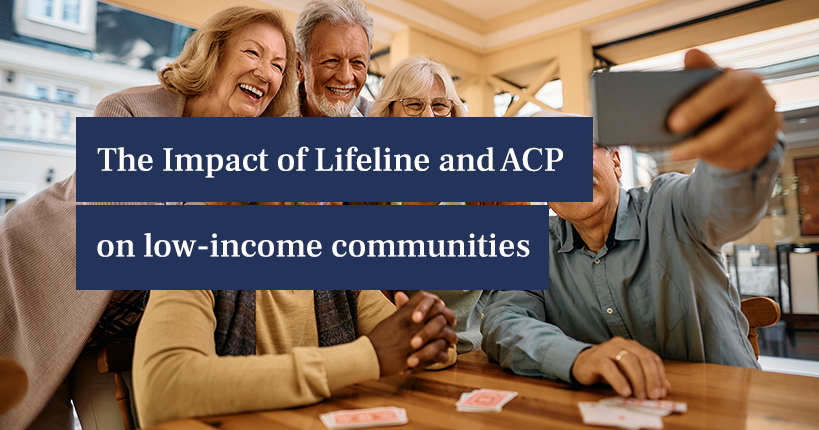Lifeline and ACP (Affordable Connectivity Program) are government programs that provide discounted phone and internet service to low-income individuals and families. These programs are designed to help close the digital divide and ensure that everyone has access to affordable communication services.
The impact of Lifeline and ACP on low-income communities is significant. For many people living in poverty, access to phone and internet service can be a matter of necessity rather than convenience. It can be a lifeline for connecting with loved ones, accessing important information and resources, and even finding and applying for jobs.
But the benefits of Lifeline and ACP go beyond just providing access to communication services. Having a phone and internet connection can also help low-income individuals and families improve their financial stability. For example, they may be able to use online banking or financial management tools to better track their spending and save money. They may also be able to use the internet to research and compare prices on goods and services, helping them to stretch their budgets further.
In addition, Lifeline and ACP can help low-income communities to access educational resources and opportunities. Students in these communities may be able to use the internet to do research, complete assignments, and even take online classes. This can be especially important in the current COVID-19 pandemic, as many schools have had to shift to online learning.
A breakdown of the impact of Lifeline and ACP on low-income communities:
- Health care access: Phone and internet service can be critical for connecting with health care providers, particularly for individuals living in rural or underserved areas. For example, someone with a chronic illness may be able to use telemedicine to receive care from a specialist without having to travel long distances.
- Emergency preparedness: Having a phone and internet connection can also be crucial in emergency situations. Low-income individuals and families may be able to use these services to access information about evacuations, shelter locations, and other important updates during natural disasters or other emergencies.
- Digital literacy: Participation in Lifeline and ACP can also help to promote digital literacy in low-income communities. As more and more services and information move online, it’s important for everyone to have the skills and knowledge to navigate the internet and take advantage of the opportunities it offers.
- Challenges and limitations: While Lifeline and ACP have the potential to make a big difference in the lives of low-income individuals and families, it’s important to recognize that these programs also have their limitations. For example, there may be eligibility requirements or documentation needed to qualify for the programs, and not everyone who is eligible may be able to take advantage of them. Additionally, the availability of services and coverage may vary depending on location.
Overall, the impact of Lifeline and ACP on low-income communities is significant and multifaceted. These programs can help to ensure that everyone has access to affordable communication services, which can have a positive impact on individuals’ and families’ financial stability, educational opportunities, health care access, and overall quality of life.


